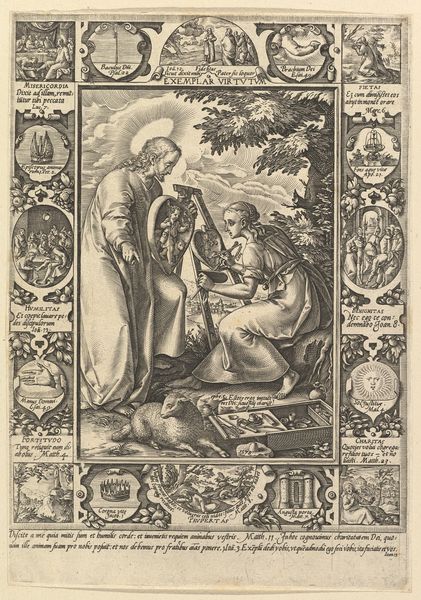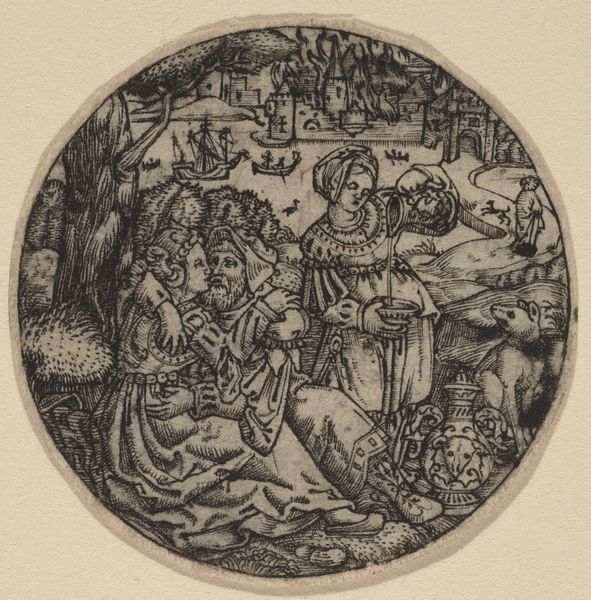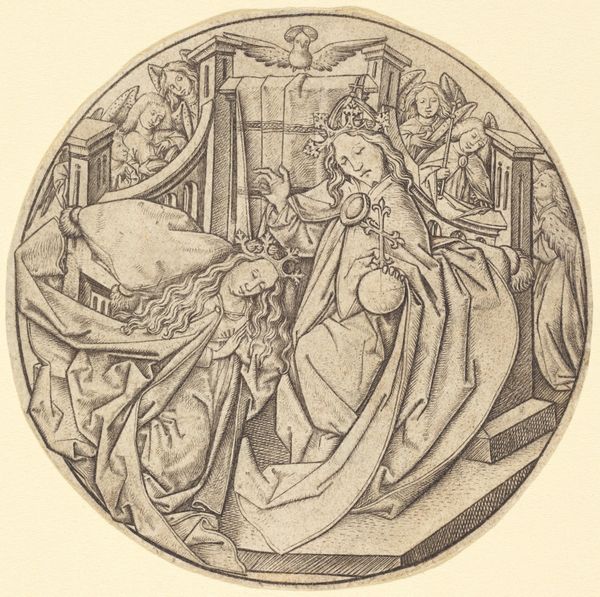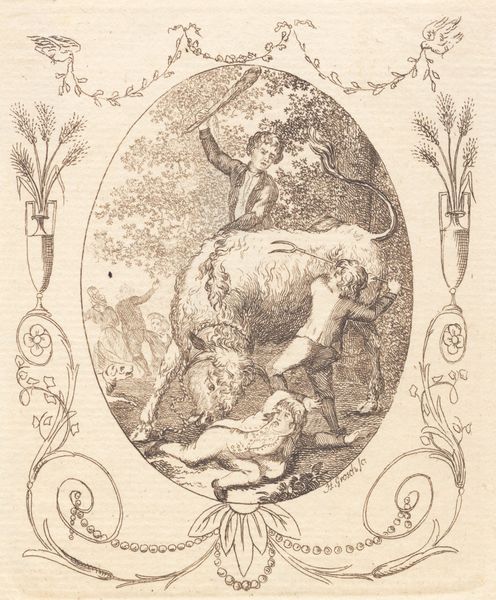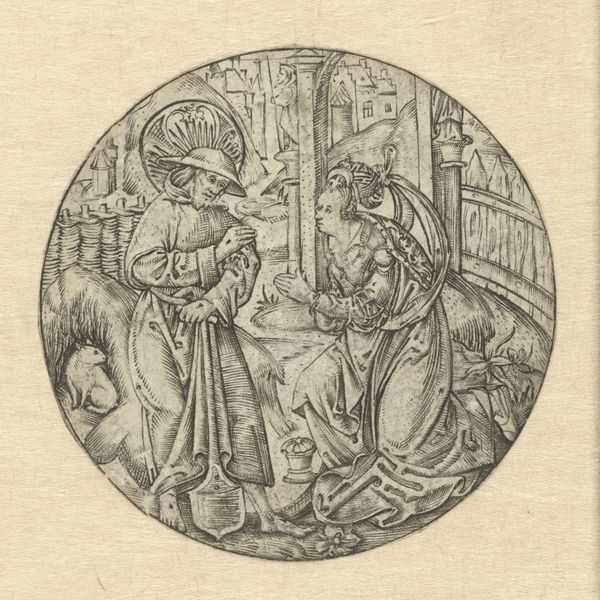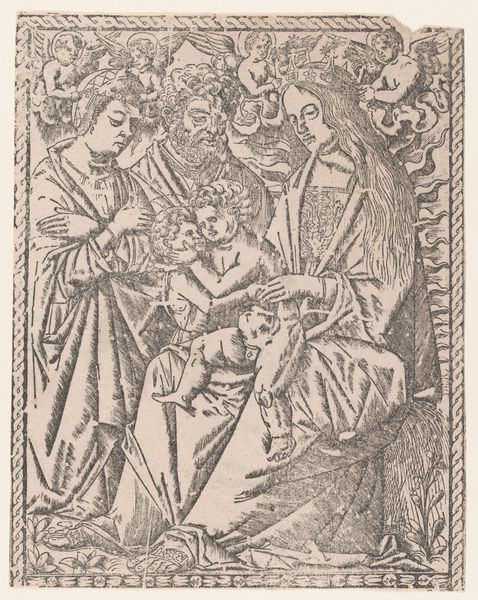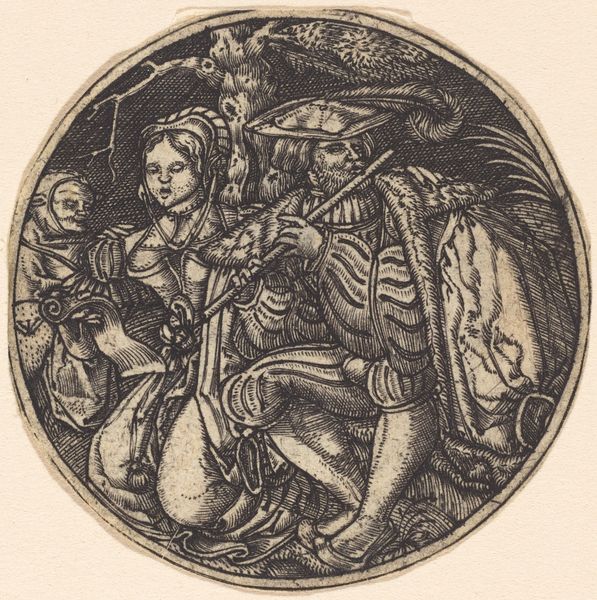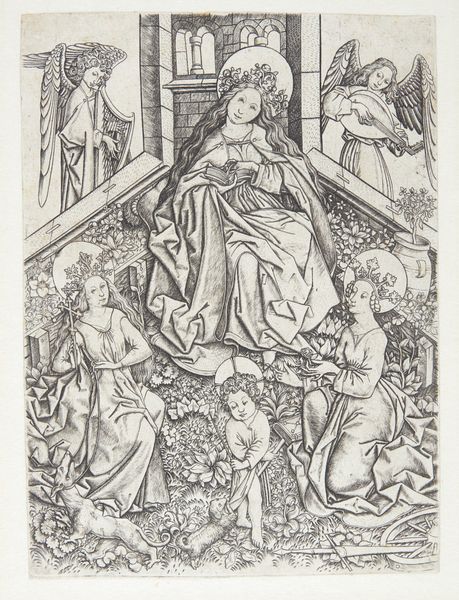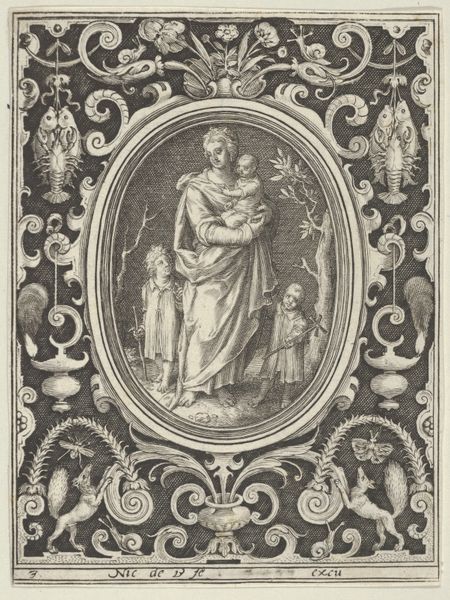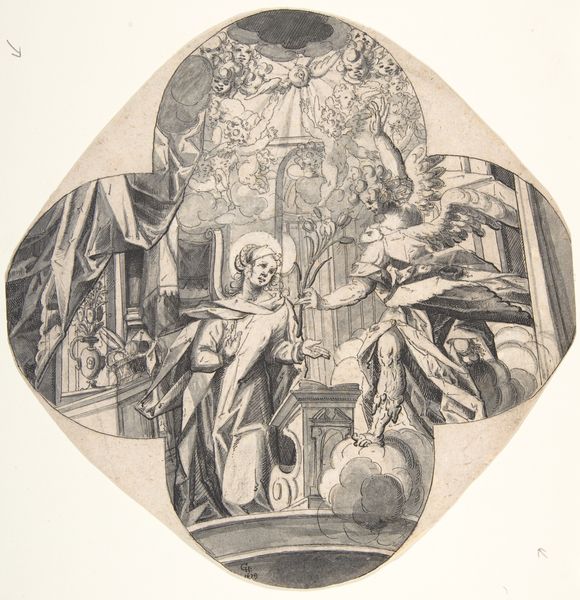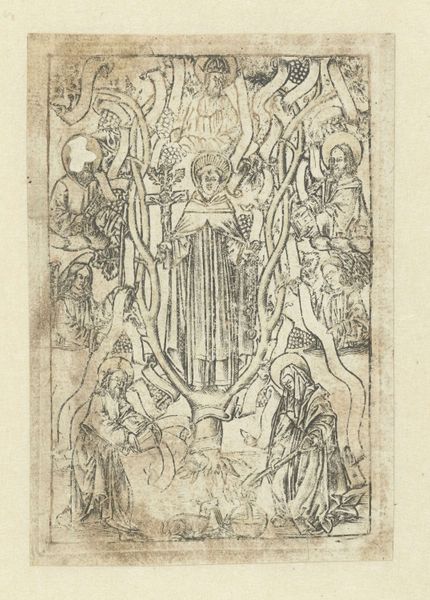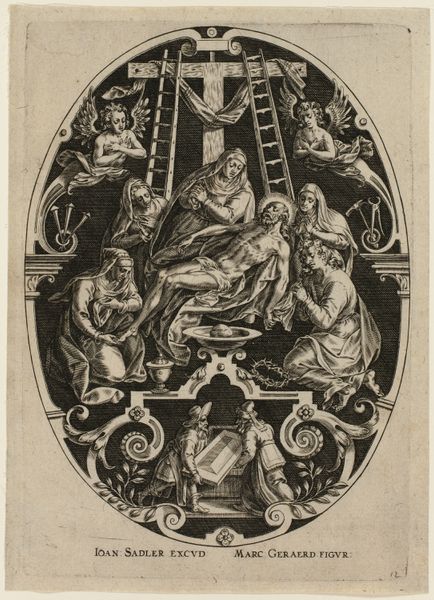
Virgin and Child with the Monkey (reverse copy) 1485 - 1528
0:00
0:00
drawing, print, intaglio, engraving
#
drawing
# print
#
intaglio
#
figuration
#
madonna
#
child
#
history-painting
#
northern-renaissance
#
engraving
Dimensions: Sheet: 2 5/8 × 2 3/16 in. (6.7 × 5.5 cm)
Copyright: Public Domain
Editor: This engraving, "Virgin and Child with the Monkey," attributed to Albrecht Dürer and dated between 1485 and 1528, presents a familiar scene in an unexpected setting. The Madonna seems so…domestic, even rustic. I am intrigued by that chained monkey! How would you interpret the visual symbolism in relation to its historical context? Curator: It’s tempting to view the monkey, chained no less, as simply a whimsical, even exotic, addition. However, within the visual and social rhetoric of the Northern Renaissance, the monkey, particularly a chained one, often served as a symbol of base instincts controlled or subjugated. Consider, too, that this print likely circulated amongst a relatively affluent, educated audience familiar with such iconography. Editor: So, the monkey isn't just a monkey. Curator: Precisely! The composition subtly reinforces established societal hierarchies and moral frameworks. We see the Virgin as the epitome of piety and maternal virtue, overseeing not only her child but, symbolically, taming the wilder aspects of human nature. How do you see that aligning with the increasing professionalization of art, and printmaking in particular, at the time? Editor: Well, making multiple copies via prints certainly allowed for wider dissemination. Maybe Durer sought to provide accessible devotional imagery infused with moral messages for an emerging middle class? Curator: An excellent point! The accessibility of prints meant that moral messages, often framed within religious contexts, reached a wider audience. This impacted religious and social ideas. Editor: It’s amazing how much historical information is embedded within what at first seemed like a quaint domestic scene. Thank you for this analysis. Curator: The public function of art often speaks loudest in what seems quietest. Looking deeper benefits all of us.
Comments
No comments
Be the first to comment and join the conversation on the ultimate creative platform.

